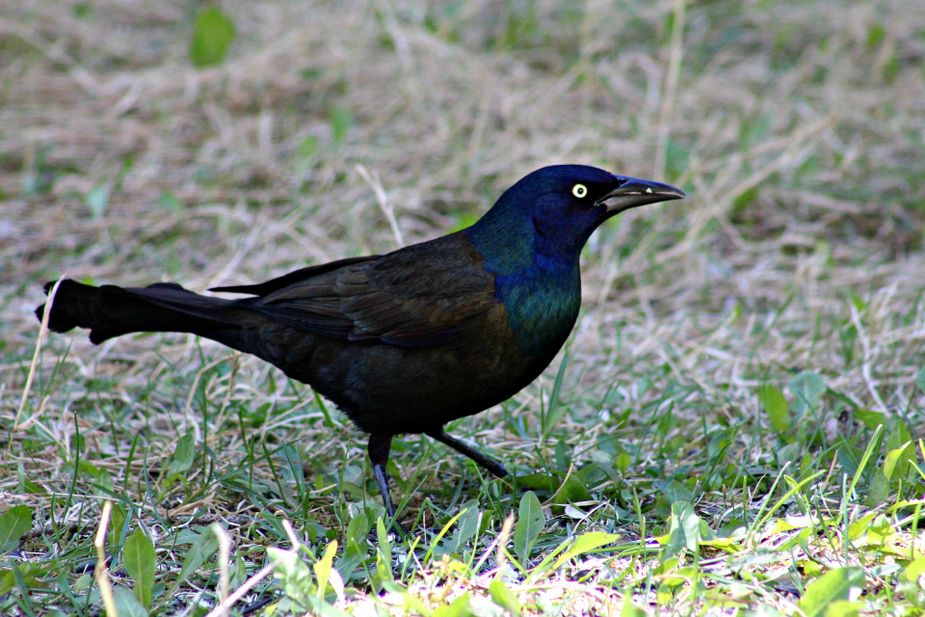Birds of a Feather
Published May 2020
By Kashea McCowan | 7 min read
The world rarely stops, even for tragedy, even when we desperately need it to.
Things may slow down around the site of the problem for a few days. It may take a day or a few months for things to "get back to normal." But there is something about a global pandemic that makes us stop and smell the roses. We are forced to sit, to breathe, to listen, and take in all the things we missed before.

Mourning doves. Photo by Irense K-s
I find myself paying newfound attention to simple things like the wind blowing through the trees, how rainbows form after a storm, or how the bees hum on a cool summer day. These are just a few of the small miracles we miss on a daily basis. As the world came to a screeching halt and many of us were ordered to stay home, the world we'd previously ignored suddenly seemed a little quieter and more peaceful. The air is a little cleaner. The birds sing a little louder.
With hectic schedules and jammed packed to-do lists, we often fill our lives with things that really don’t matter. We crowd our spaces with trinkets and trash just to occupy the void within. We have places to go but no place to be. The last few months shined a light on what matters most in life and highlighted what we we often overlook: clean water, food, shelter, and clothing.
For me, nature has become more important. It provides me with outdoor adventure, fresh air, and a connection with the animals that I wouldn’t otherwise give a second glance. But as human priorities take a backseat, all the offerings of the natural world rise to the forefront and the birds of Oklahoma come out to play.

A common grackle. Photo by Jennifer Beebe
It was during a daily Google Hangouts meeting with my co-workers that the birds in my backyard grabbed our attention. I had always heard them but I hadn't been listening. But on that particular morning, when Oklahoma City seemed as quiet as it had ever been, common grackles, Bewick's wrens, mourning doves, and house finches chimed in with song. They overtook our conversation. Each bird sang its many parts and seemed freer and happier than ever before. To them—as Mr. Rogers used to say—it was a beautiful day in the neighborhood.
Once my eyes and ears were open, I couldn't shut them again. Now I listen each morning as Mourning and Eurasian doves, gray birds with plump bodies, small heads, black collars around the neck, and long tails, sound the alarm with their deep cuckoos. By 6 a.m. the Carolina wren—a small, chunky brown bird with a tan chest and round body—and all of her brothers and sisters whistle as the sun rises.
To complete the morning roll call, the red-headed house finch chippers in with a high-pitched melody while the brown-headed cowbird—a small blackbird with a short tail and a thicker head—makes its presence known as it prepares to lay its eggs in other birds nests. The common grackle, all black with hues of royal green and blue, scream out like a speaker box ensuring that everyone in the neighborhood is awake while the American robin does its caroling from porch nests and windowsills at first light.
As lovely as these common backyard birds gracing the flatlands of Oklahoma are, the most popular of them all is the scissor-tailed flycatcher which perched on the title of Oklahoma’s state bird on May 26, 1951.
.jpg)
American robin. Photo by Kashea McCowan
According to the Oklahoma Ornithological Society’s Bird Records Committee, as of 2019 there are four hundred and eighty-one species of birds in Oklahoma, of which one hundred and twenty-one are classified as accidental, seven were introduced to North America, and more than thirty species of them are classified as either extinct, hypothetical, or of uncertain origin.
Out of all the backyard birds in Oklahoma, there are more than sixty order and family categories of birds. Ranging from ducks, geese, and waterfowl; pheasants, grouse, and allies; boobies and gannets; cranes; pelicans; ibises and spoonbills; barn-owls; woodpeckers; jays, crows, magpies, and ravens; gnatcatchers; and many more, Oklahoma seems like the stomping grounds for some of the most beautiful birds.
During this time of social-distancing, when we're all cooped up like pigeons, being out in nature is one of the safest places to be. Oklahoma has some of the most wonderful state parks and natural wonders anywhere, and they're great places to get to know some of your favorite neighborhood feathered friends like the tufted titmouse, a North American songbird in the tit and chickadee family, the yellow-bellied sapsucker with its cat-like calls and staccato drumming, and the pine siskin which is patterned like a sparrow but is really a goldfinch in disguise.
When this is all over and it is safe to resume life as we knew it, remember the many birds who broke the silence of days with a chirp, tweet, twitter, caw, hoot, song, and cock-a-doodle-do, and reminds us all that we have plenty to be grateful for even during times of uncertainty.
"Art Stars"
"Times Were Never Simple"
You May Like
Weekly Events Calendar: April 21-27, 2025
This week in Oklahoma: The world's a stage in Oklahoma City; a fantasy land in Shawnee; and Earth Day celebrations across Oklahoma State ...
This week in Oklahoma: The world's a stage in Oklahoma City; a fantasy land in Shawnee; and Earth Day celebrations across Oklahoma State Parks
Oklahoma Today Podcast: April 21, 2025
Teresa Knox used her passion for music and Leon Russell to restore Tulsa's legendary church studio. She joins the podcast this week in ad...
Teresa Knox used her passion for music and Leon Russell to restore Tulsa's legendary church studio. She joins the podcast this week in advance of this May's Carney Fest.
It's Festival of the Arts season in OKC. Here's what to expect.
Visitors will once again flock to Bicentennial Park for the Oklahoma City tradition.
Visitors will once again flock to Bicentennial Park for the Oklahoma City tradition.





.png)
.png)



